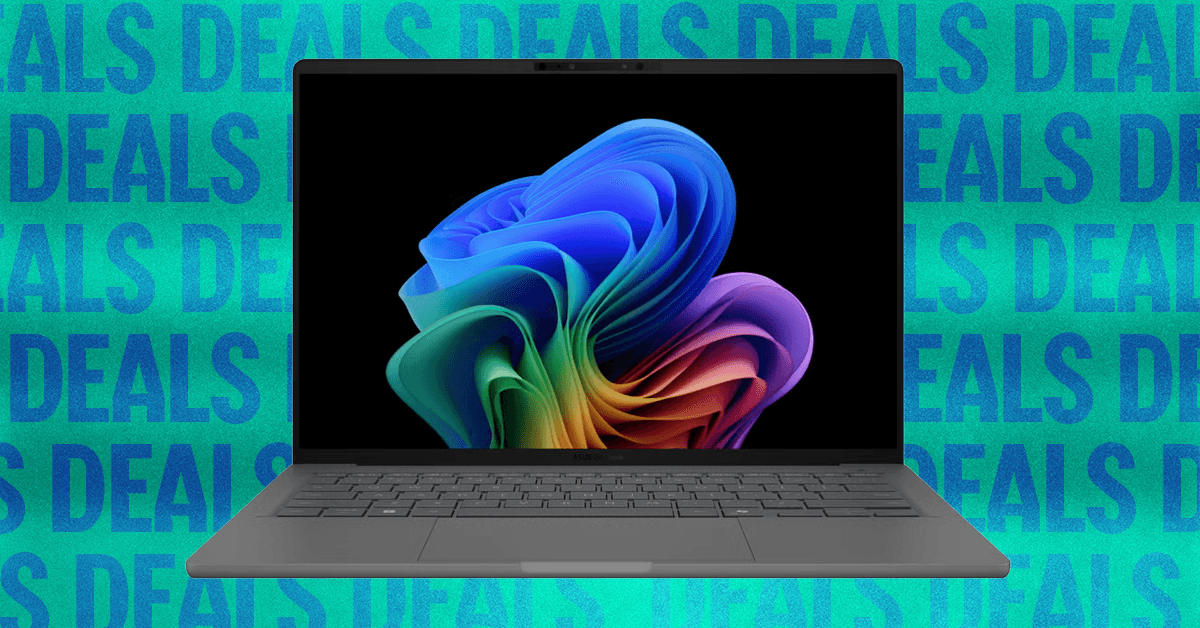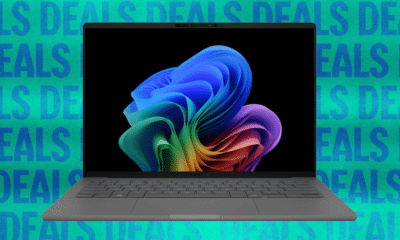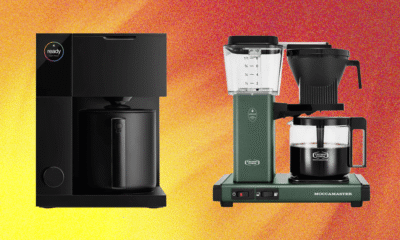Tech
Best Travel Pants for Women Who Go Places (2025)

Travel pants that are tough enough to handle hangry moods and unplanned delays.
Source link
Tech
Got a Pixel 10? Google’s Android Phone Can Now Share Files With Apple’s AirDrop
The caveat is that the iPhone user will need to switch AirDrop into the “Everyone for 10 Minutes” mode instead of “Contacts Only” mode. Google says this isn’t some kind of workaround solution. It’s a direct, peer-to-peer connection; your data isn’t routed through a server, shared content isn’t logged, and no extra data is shared. Naturally, iPhone owners will be able to send data back to Pixel 10 phones as well.
Google has not worked with Apple on this cross-compatibility, as the company says it “welcomes the opportunity” to work with Apple so that this sharing function can work in the Contacts Only mode. “We accomplished this through our own implementation,” a Google spokesperson tells WIRED. “Our goal is to provide an easy and secure file-sharing experience for our users, regardless of who they are communicating with.”
In a security blog post, Google says the underlying strategy for what makes this new synergy between Quick Share and AirDrop work is the memory-safe Rust programming language. “These overlapping protections on both platforms work in concert with the secure connection to provide comprehensive safety for your data when you share or receive,” writes Dave Kleidermacher, vice president of Google’s platforms security and privacy.
Google tapped NetSPI, a third-party and independent penetration testing firm, to validate the security of the new sharing feature. The findings? The interoperability is “notably stronger” than other industry implementations. That’s pretty important, considering what happened the last time someone tried to improve cross-compatibility between iOS and Android without Apple: The startup Beeper tried to make texts from Android phones show up as blue bubbles on iPhones and caused all kinds of drama.
The number of people who can actually use this feature is limited because it’s only available on Google’s latest Pixel 10 smartphones, which just launched this past August. However, Google says it’s looking to expand the feature to more Android devices in the future.
This new feature in Quick Share is rolling out starting today to the Pixel 10 series, which includes the Google Pixel 10, Pixel 10 Pro, Pixel 10 Pro XL, and Pixel 10 Pro Fold. As it’s rolling out, you may not see it immediately on your device. To use it, all you need to do is select something to share, whether it’s a file, contact, or photo, choose Quick Share in the sharing menu, and make sure the iPhone owner has their AirDrop set to “Everyone for 10 Minutes Only.” The iPhone will be able to see the Pixel 10 device and can receive or send data.
Tech
This Lightweight Laptop Is Almost Half Off

On the hunt for a lightweight and budget-friendly laptop that won’t let you down? Best Buy has the Asus Zenbook A14 discounted from its usual $1,000 price point to just $550 for an early Black Friday deal. This featherweight laptop is a Windows Copilot+ PC, with a Qualcomm Snapdragon X Plus at its core, and is a great deal for students or occasionally putting in some hours from your local café.
Weighing in at just 2.1 pounds, this Zenbook is one of the lightest laptops we’ve tested to date, with most machines starting closer to 2.4, and only Lenovo’s Thinkpad X1 Carbon coming anywhere close at 2.2 pounds. That’s largely thanks to a material developed by Asus called Ceraluminum, a combination of ceramic and aluminum that’s both extremely light and very durable.
Like a lot of laptops in the Copilot+ range, the Zenbook sports an FHD+ (1920 x 1200) resolution screen, but it’s at least an OLED panel, which is great news for those of you who put your laptop on the coffee table to watch movies. Our reviewer Christopher Null ran a video playback test, and even with the screen at full brightness, the laptop managed to run for over 20 hours. That’s a truly impressive feat, particularly for a laptop so thin and light.
The heart of this machine is a Snapdragon X Plus from Qualcomm, a brand you might be more used to seeing in mobile phones than Windows machines. While it does help give you that awesome battery life, the performance leaves a bit to be desired. While it’s totally fine for web browsing, text documents, and email, don’t expect to play the latest games, or do anything more strenuous than some light graphics work.
Qualcomm chips are slowly becoming a more appealing option for laptops, and if you’re trying not to spend a ton of money on a laptop, they’re worth a look. While gamers and video editors should swing by our laptop roundup for more serious options, at just $550 the Zenbook A14 offers a surprising amount of value in a petite package.
Tech
5G Standalone growth spurs differentiated connectivity services | Computer Weekly

One of the key trends of 2025 has been the continued growth of 5G Standalone (5G SA) networks, and this growth has been confirmed by the November 2025 Ericsson mobility report (EMR), which found that deployments have triggered a notable 2025 growth in the number of communications service providers (CSPs) offering differentiated connectivity commercial models based on 5G SA network slicing.
The November 2025 EMR covers a new forecast timeframe, from 2025 through the end of 2031. EMR researchers identified 118 cases – across 56 CSPs – where network slicing is used to provide differentiated connectivity services. Out of these 118 cases, 65 have moved beyond proof of concept and into commercial services across 33 CSPs. These are either subscription services or add-on packages for consumer or enterprise customers. Twenty-one of the 65 commercial offerings – almost one third – were launched during 2025 alone.
In addition, the study found that more than 90 CSPs have now launched/soft-launched 5G Standalone (5G SA) networks – an increase of about 30 CSPs from the same period last year, and 20 from the June 2025 EMR report. It added that in 2025 alone, 5G subscriptions are expected to top 2.9 billion by the end of the year – equating to around one-third of all current mobile subscriptions – an increase of some 600 million subscriptions year on year.
In geographical coverage terms, 2025 saw an increase of 400 million people worldwide being able to access 5G. Around half of the global population beyond mainland China is expected to have 5G coverage by the end of 2025.
Mobile network data traffic grew 20% between the third quarter of 2024 and the corresponding period in 2025, which Ericsson said was a slightly larger-than-expected increase, driven by mainland China and India. Continued growth is forecast at an annual average of 16% through 2031. 5G networks are expected to manage 43% of all mobile data by the close of 2025, up from 34 % for the corresponding period last year. EMR experts forecast this to increase to 83% in 2031.
Looking at 5G use cases, the survey predicted enhanced mobile broadband to top 6.4 billion 5G subscriptions by the end of 2031, comprising around two-thirds of all mobile subscriptions at the time. Some 4.1 billion of these subscriptions – around 65% – are forecast to be 5G SA.
Fixed Wireless Access (FWA) broadband was also seen as continuing to grow as a 5G use case. The November 2025 EMR forecasts that around 1.4 billion people globally are expected to access FWA broadband by the end of 2031 – 90% via 5G. EMR researchers have identified 159 providers that currently offer FWA services via 5G – amounting to approximately 65% of all FWA service providers.
The survey also found that the number of service providers offering speed-based tariffs – a common monetisation model for fixed broadband via fibre or cable – increased from 43% to 54% since the November 2024 EMR.
Commenting on the research and its findings regarding 5G, EMR publisher and Ericsson CTO Erik Ekudden said: “We see that service providers around the world are keen to embrace and deploy 5G SA to offer differentiated connectivity based on value services and not just data volume packages. As reflected in the case studies in this EMR edition, 5G SA is already enabling differentiated connectivity opportunities. We’ve seen many service providers go from proof-of-concept to commercial deployment in 2025 alone, and we expect to see that trend continuing.”
The new reporting EMR period also covered the first expected deployments of commercial 6G. Based on previous mobile generation cycles’ subscriptions uptake, EMR researchers expect the first commercial launches to be driven by leading service providers in front-runner markets, such as the US Japan, South Korea, China, India and some Gulf Cooperation Council countries.
Global 6G subscriptions are forecast to reach 180 million by the end of 2031, not including the early uptake of AI-enabled internet of yhings devices. Ericsson believes that the subscription uptake number could increase significantly if 6G launches earlier than previous cycles indicate. Commercial 6G is expected to launch about a year later in Europe, compared with other countries, than was the case for 5G, primarily due comparably later deployments of 5G SA.
-

 Tech5 days ago
Tech5 days agoNew carbon capture method uses water and pressure to remove CO₂ from emissions at half current costs
-

 Politics7 days ago
Politics7 days agoBritish-Pakistani honoured for transforming UK halal meat industry
-

 Business5 days ago
Business5 days agoThese 9 Common Money Mistakes Are Eating Your Income
-

 Sports5 days ago
Sports5 days agoTexas A&M officer scolds South Carolina wide receiver after touchdown; department speaks out
-

 Sports6 days ago
Sports6 days agoApple scrapping MLS Season Pass service in ’26
-

 Business6 days ago
Business6 days agoWhat’s behind Rachel Reeves’s hokey cokey on income tax rises?
-

 Fashion6 days ago
Fashion6 days agoAfter London, Leeds and Newcastle, next stop Glasgow for busy Omnes
-

 Tech7 days ago
Tech7 days ago$25 Off Exclusive Blue Apron Coupon for November 2025















